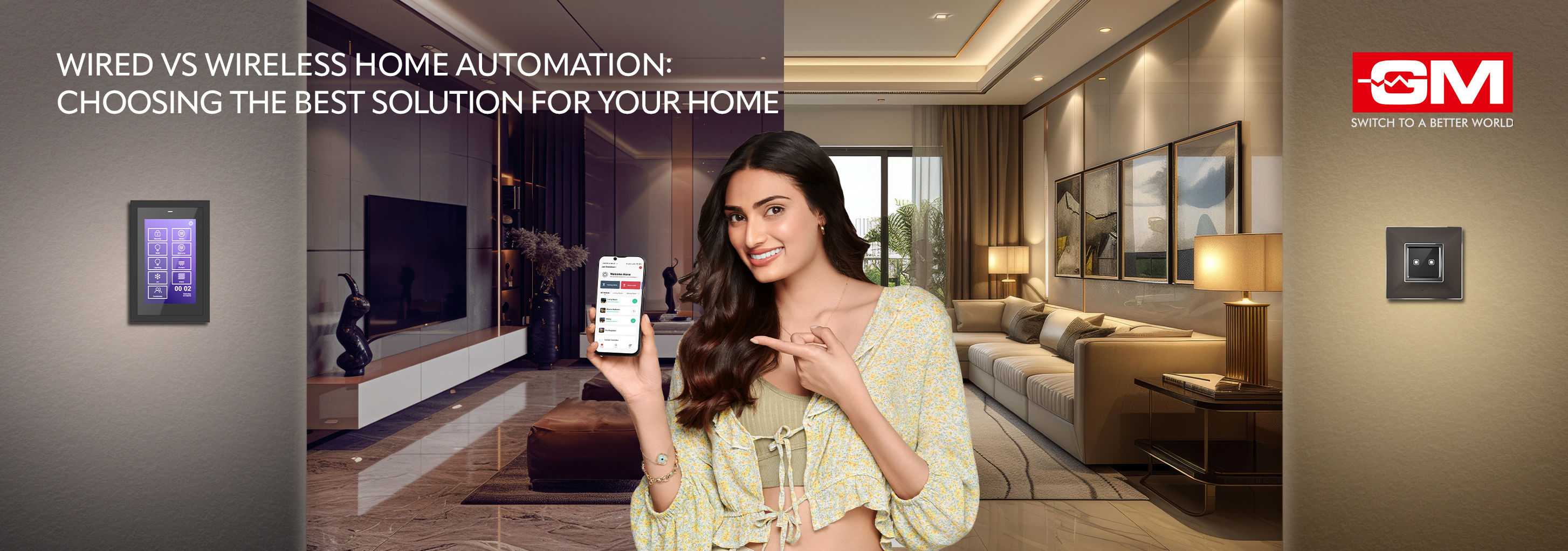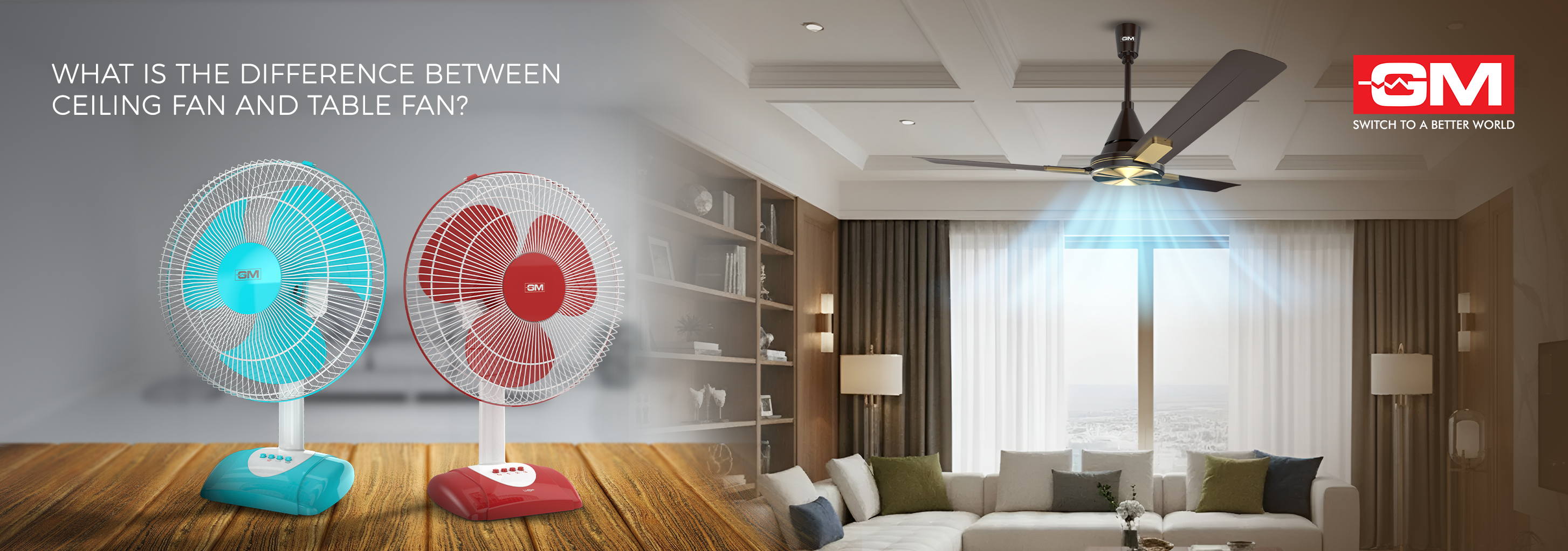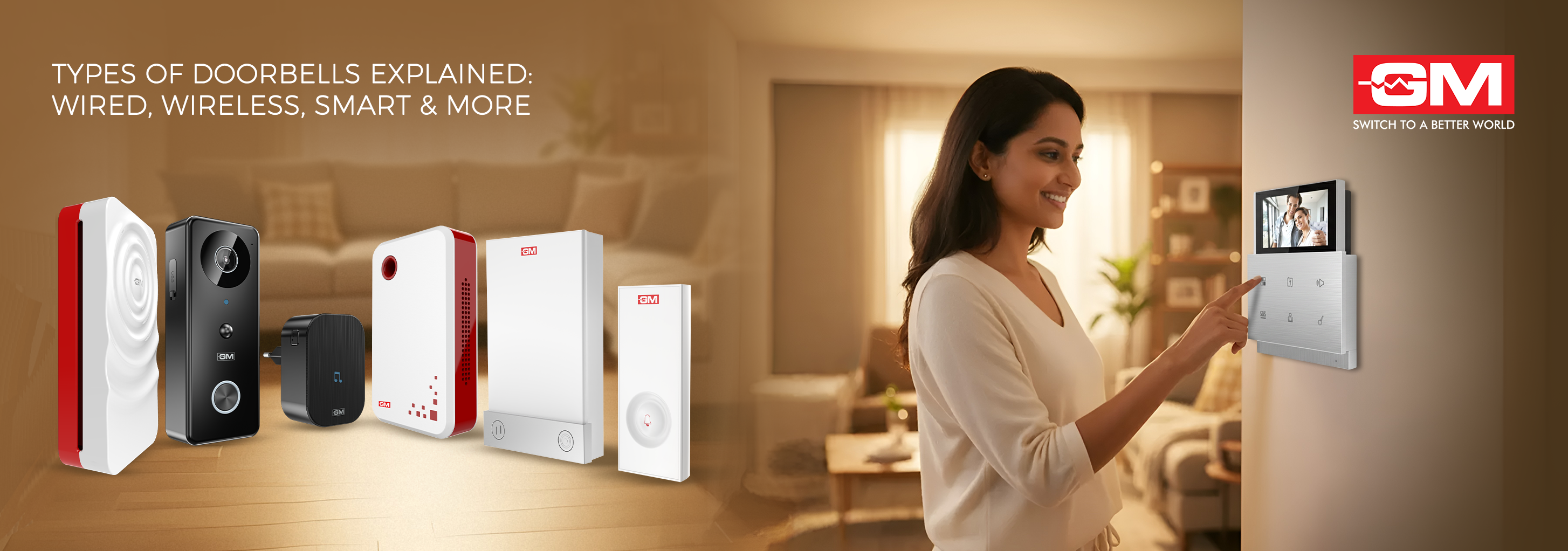Blog
Wired vs Wireless Home Automation: Choosing the Best Solution for Your Home
Updated on Sep 2024

The transition from wired to wireless headphones is an example of how digital preferences are shifting in this era of Gen Z and millennials adjusting to a fast-changing world. In the same way, the argument over wireless vs wired solutions in home automation is more important than ever. With several options to suit different needs and situations, each offers unique benefits. Due to its extensive industry knowledge, GM Modular is able to offer homeowners insightful information on wired and wireless home automation solutions, enabling them to make decisions that complement their contemporary lives.
Understanding Wired and Wireless Home Automation Systems
Wired Home Automation
A wired home automation system involves a network of cables that connect various devices to a central control system. This setup is usually planned and executed during the construction phase of a home or during major renovations. GM Modular's wired solutions, like the G-Bus system, provide a reliable and secure approach to managing your home's environment, integrating everything from lighting and heating to security systems.
Wireless Home Automation
Conversely, wireless systems connect devices using Bluetooth, Wi-Fi, and other wireless technologies. Flexibility and simplicity of installation are two features that make this method particularly appealing to people who already own homes or who want a less intrusive setup. With the help of wireless solutions from GM Modular, such as the i-Fi Pro Wi-Fi switches, homeowners can operate their appliances without having to do a lot of rewiring.
Advantages of Wired and Wireless Home Automation
Here is a tabular comparison of the advantages of wired versus wireless home automation systems, broken down into six key points:
|
Features |
Wired Home Automation |
Wireless Home Automation |
|
Reliability |
Offers a stable and constant connection with less susceptibility to interference, ensuring seamless operation. |
May experience interference from other devices, but modern technologies are improving reliability. |
|
Security |
More secure as it is less susceptible to hacking due to the physical connections. Crucial for systems controlling locks, alarms, and surveillance. |
Security can be a concern due to the potential for wireless signals to be intercepted, though encryption is improving. |
|
Installation |
It requires professional installation; it is ideal during new construction or major renovations as it involves extensive wiring. |
The wireless smart home system is easier and less disruptive to install as it doesn’t require running physical wires, making it ideal for existing homes or for incremental upgrades. |
|
Scalability |
Expanding the system can be complex and costly due to the need for additional wiring. |
Easily scalable; new devices can be added without additional wiring, offering greater flexibility in system expansion. |
|
Speed |
Typically offers faster data transfer rates, which is beneficial for high-bandwidth applications like HD video streaming. |
Adequate for most home automation tasks but can be slower or lag during high data usage depending on the strength of the wireless signal. |
|
Remote Access |
Typically controlled via in-home panels or connected systems. Remote access can be configured but is often less straightforward. |
Easily controlled remotely using apps on smartphones or tablets, providing convenience and control from anywhere with internet access. |
This table distils the essential features and benefits of wired vs wireless home automation systems, highlighting factors that homeowners must consider before making their decision.
Choosing Between Wired and Wireless
When deciding between wired and wireless home automation, consider the following factors:
● Installation Context: Wired systems are ideal for new constructions or major renovations where walls are open, and wiring can be easily integrated. Wireless systems are better suited for retrofitting in existing homes.
● Performance Needs: If your home automation demands involve high-speed data like streaming video or transferring large files across devices, a wired network might be more appropriate.
● Security Concerns: For those with significant security needs, the enhanced security of a wired network might outweigh the benefits of wireless systems.
● Budget and Flexibility: Wireless systems generally offer a lower initial cost and greater flexibility to add or move devices without additional costs for rewiring.
GM Modular’s Home Automation Solutions
GM Modular provides both wired and wireless home automation options, catering to a wide range of needs and preferences. Our G-Bus system offers a robust and integrated approach for those who prefer a wired network, while our i-Fi Pro Wi-Fi switches and other wireless devices offer an accessible entry point into home automation for those seeking flexibility and minimal installation disruption.
The choice between wired and wireless home automation systems depends largely on your specific home situation, your security and performance requirements, and your future expansion plans. Both systems offer distinct advantages, and the best choice varies by individual preferences. GM Modular's expertise in providing both wired and wireless solutions ensures that regardless of the path you choose, your smart home will be efficient,comfortable, and secure.
Related Blogs

Who Invented the Ceiling Fan? A Journey Through Time
Ceiling fans are a quiet yet transformative part of life at home, offering comfort, style, and energy savings all year round. But not many of us know about the invention of the ceiling fan and how this humble device revolutionised modern living. To a
Read More
What is the Difference Between a Ceiling Fan and a Table Fan?
Fans are easy to use and save energy, so most people use them to keep a room cool and comfortable. But before you buy one, you should know what makes a ceiling fan different from a table fan. They both move air, but they do it in very different ways
Read More
Types of Doorbells Explained: Wired, Wireless, Smart, and More
A doorbell is one of the most important parts of a home or office, but it's also one of the most common things that people forget about. It not only lets visitors know you're home, but it also makes your space more convenient, safe, and stylish. The
Read More
How to Use a Steam Iron Safely and Effectively?
No matter if you're going to work, a meeting, or a party, wearing a crisp, wrinkle-free outfit can boost your confidence right away. But you need to know how to use a steam iron correctly to get that perfect finish. A steam iron isn't just another ap
Read More